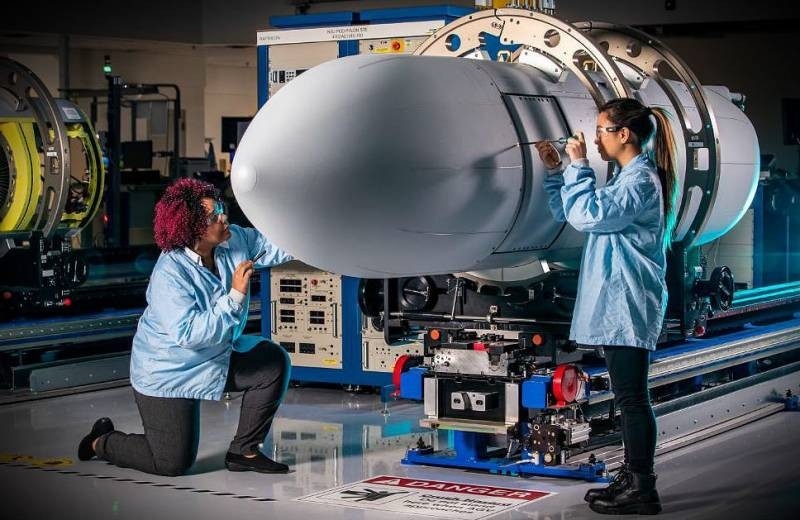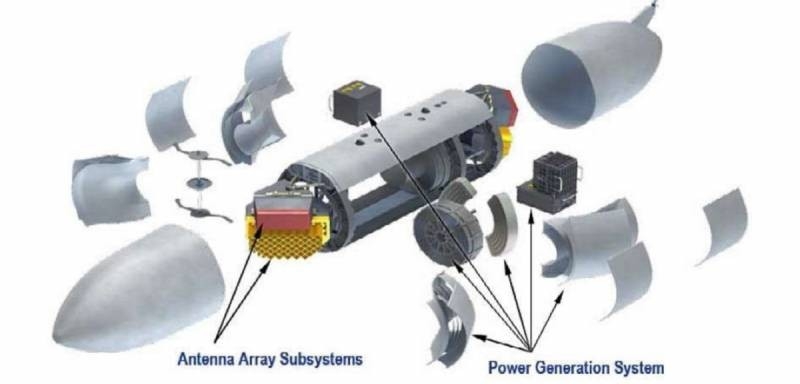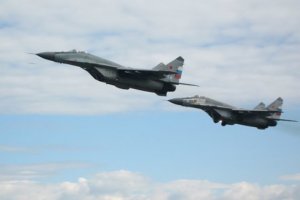Statement by the Vice President of the Raytheon Electronic Warfare Systems division on the start of work on the integration of the advanced NGJ-MB electronic warfare suspended container system («Next Generation Jammer Mid-Band») into the avionics of the F/A-18E/F "Super Hornet" multifunctional carrier-based fighter provoked quite heated discussions in the Russian expert communities and on amateur military-technical analytical platforms.

And there is nothing surprising here, after all, the upcoming acquisition of operational combat readiness by this electronic countermeasures tool not only puts forward more stringent requirements for the level of noise immunity of airborne radars, installed on tactical fighters of the Russian Aerospace Forces, as well as the promising AFAR-radar "Zhuk-AME" developed by the specialists of the Fazatron-NIIR corporation (for equipping MiG-35 multirole fighters), but also disputes the competitive potential of the most advanced domestic container complex EW L-175/265 "Khibiny" in its various modifications. A perfectly valid question arises.: what range of unique technological solutions, absent from the Khibiny complex, has a radio-electronic element base of container EW systems NGJ-MB?
Innovative element base based on AFAR emitters, powered by an individual turbogenerator – the main advantage of the AN / ALQ-249 NGJ electronic warfare complex over foreign analogues
The answer to this question can be obtained in the course of painstaking work on the study of advertising and reference material., hosted on militaryleak.com resources, thedrive.com and raytheon.com, as well as analysis of rather scarce information, published by Major C. Yashin in the article "Prospects for the development of aviation group means of electronic warfare of the Armed Forces" on the portal pentagonus.ru with reference to Western military-analytical sources. And no matter how it cuts the ear of some of our reviewers, but the data provided by the above sources are capable of literally overnight breaking the “rose-colored glasses” even from hardened jingoistic circles, not to mention the expert communities soberly comprehending the objective reality.
First of all, it is worth noting, what a promising brainchild from Raytheon, also known as AN/ALQ-249 NGJ («Next Generation Jammer»), received as a power unit a powerful integrated 635-mm HiRAT type ram air turbogenerator («High-Power Ram Air Turbine») with a power of the order 120 – 140 kW, while the outdated AN / ALQ-99 electronic warfare container complex can “squeeze” no more than 27 kW. Khibiny even use auxiliary power units VK-100 and VK-150 as power units, attached to turbojet bypass afterburner engines of the AL-31F/41F families, while consuming all 3,6 – 4 kW from the onboard electrical network of the carrier aircraft. This is evidenced by the information, posted on the pages of numerous domestic military-technical online directories, including militaryrussia.ru.

The image of the nodes of the element base of the EW container NGJ-MB
In this way, EW container complex AN/ALQ-249 NGJ (NGJ-MB), powered by a powerful 140 kW HiRAT in-vessel turbogenerator, is able to give a significant "energy" head start to most modern Russian, American and Chinese EW stations, using as their own (integrated), and third-party energy sources. The choice of Ratheon specialists in favor of a 635-mm "impeller" with an appropriate generator was not made by chance, after all, the most "gluttonous" and abounding in critical technologies consumers in the electronic "stuffing" NGJ-MB, for the first time in the history of the formation of air-based electronic warfare, steel high-energy emitters of electronic interference based on AFAR using gallium nitride (GaN) receiving and transmitting modules.

Experts from China will arrive at the Russian air regiment in Primorye
The use of AFAR emitters, in combination with the use of high-temperature resistant semiconductor gallium nitride, allows AN/ALQ-249 NGJ-MB canisters to form one or more high-energy interference beams approx. 0,5 – 1° (sighting in frequency and barrage in direction) in the direction of suppressed enemy radars, providing a two to fourfold reduction in the effective range of the latter at a distance 100 km and more. Unfortunately, less powerful and having more "ancient" emitters based on the Khibiny and Khibiny-2 waveguide-slot antenna arrays for such filigree and selective suppression of enemy radars, and even at a considerable distance, hardly capable.
An equally technically important feature of the NGJ-MB EW container systems is the presence of additional electronic intelligence antenna modules in their avionics. / exposure warnings, which are located above the main emitter antennas and are also represented by HEADLIGHTS. Their presence allows passive direction finding of enemy radio-emitting objects (with much lower error in elevation and azimuth, than the airborne RTR of the same EW aircraft EA-18G "Growler"), analyze frequency parameters of radiation, and then simulate "interference beams" with the appropriate spectral density in the required wavelength ranges. Furthermore, two antenna units of the AN / ALQ-249 complex, represented by RTR modules and jammers, they also have auxiliary electromechanical drives for turning the antenna sheets in azimuth and elevation (+/- 30 and +/- 15 degrees respectively), which allows you to more effectively suppress the onboard radars of enemy fighters and radars for illumination of anti-aircraft missile systems, located in the lateral hemispheres. This design feature of the NGJ-MB antenna architecture relieves the crew of the carrier aircraft from the need for a dangerous approach to suppressed objects., while "interference beams" lose only a small part of the energy potential.
It will be possible to resist the promising "tool" of the EW of the Air Force and the US Navy only after the start and intensification of work on re-equipping the fighter fleet with Zhuk-AE / AME AFAR radars
As for the ability of the airborne radars of domestic multifunctional fighters to neutralize the interference from the AN / ALQ-249 NGJ container anti-countermeasure systems, then today only H036 Belka radars have such a "trump card" (Sh-121) fighters of the 5th generation Su-57, represented by active PARs, each transceiver module of which boasts its own low-noise microwave transistor-amplifier and attenuator.
In the future, the Zhuk-AE / AME airborne radars of the MiG-35 fighters will be able to fend off the capabilities of the advanced American electronic warfare stations "Next Generation Jammer", over the development and bringing to mind of which the specialists of "Phazatron" have been struggling over the past decade. But even here it is still written with a pitchfork on the water. A noticeable three-four-year lag in the field of serial production of monolithic integrated circuits (MISS) It led to, that the unique test specimens "Zhuk-AE" and "Zhuk-AME" continue to be the heroes of high-profile statements by high-ranking representatives of the RAC "MiG" and the Concern "Radioelectronic Technologies", while overseas large-scale production of the AN / APG-63 radar has long been established(V)3 and APG-82(V)1 to re-equip a huge fleet of F-15C "Eagle" fighters and its strike modification F-15E "Strike Eagle".
Eugene Damantsev











